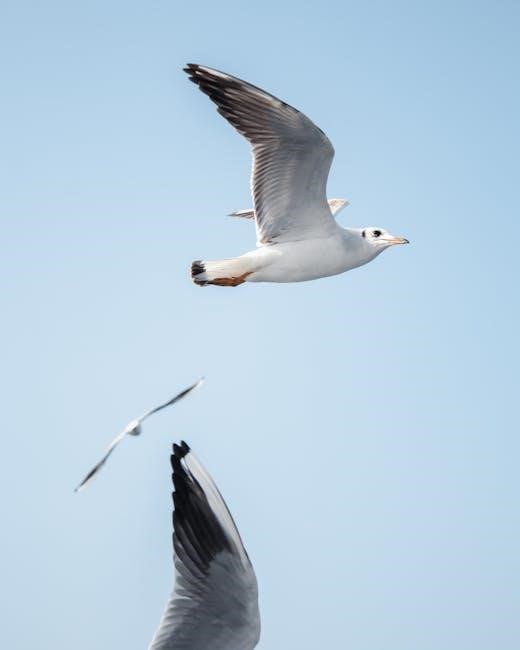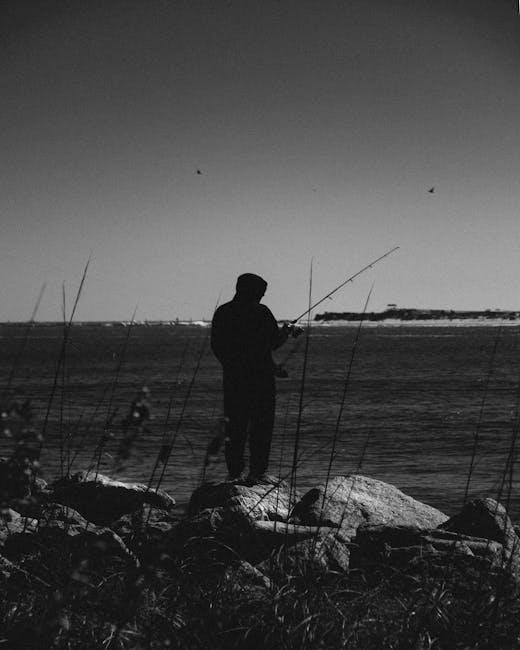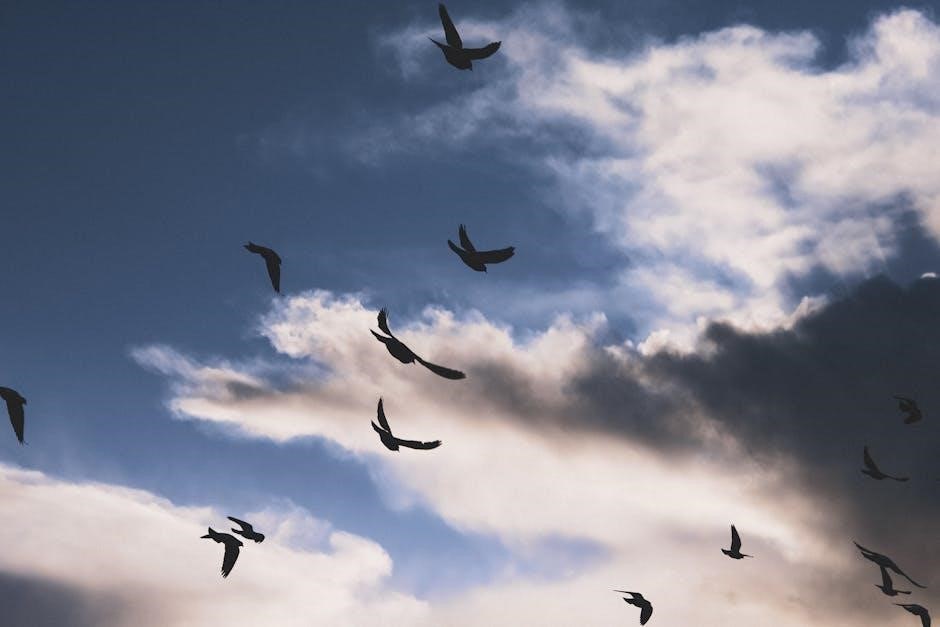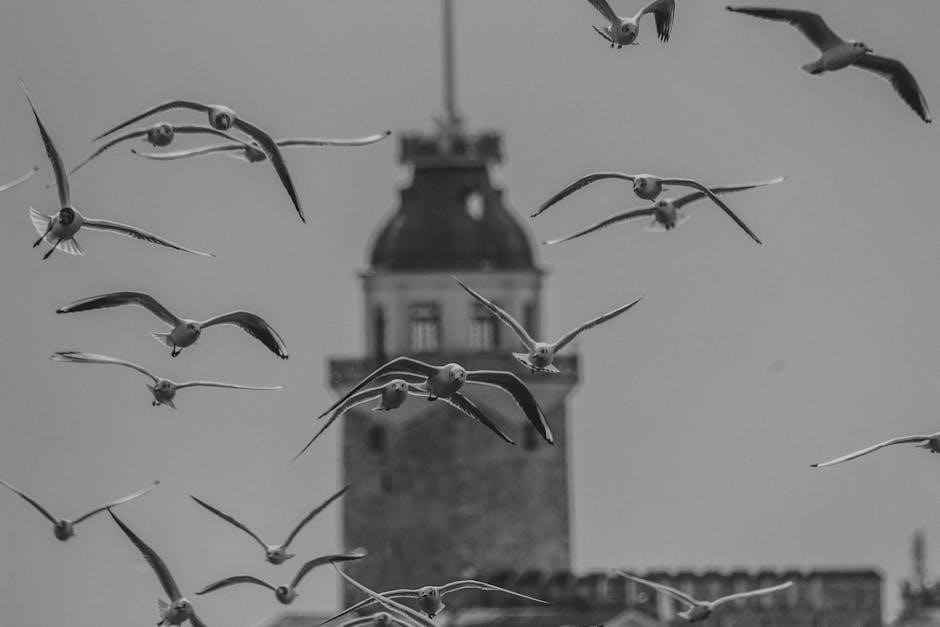Fly fishing fly size guide provides essential information for anglers to choose suitable flies and tackle, using a standardized system to measure fly sizes, ensuring successful fishing trips with optimal gear selection always.
Understanding the Importance of Fly Size
Fly size is a crucial aspect of fly fishing, as it directly affects the chances of catching fish. The size of the fly can determine how visible it is to the fish, as well as how easily the fish can ingest it. A fly that is too large may be intimidating to the fish, while a fly that is too small may not be noticeable. Understanding the importance of fly size is essential for anglers to make informed decisions when selecting flies. The size of the fly can also depend on the type of fish being targeted, as well as the water conditions. For example, in clear water, a smaller fly may be more effective, while in murky water, a larger fly may be needed. By understanding the importance of fly size, anglers can increase their chances of success and make their fishing experience more enjoyable. Effective fly selection is key to a successful fishing trip.

Factors Affecting Fly Size Selection
Water conditions and fish behavior affect fly size selection greatly always influencing fishing outcomes with various factors considered.
Water Temperature and Fly Size
Water temperature plays a significant role in determining the appropriate fly size for fishing, as it affects the behavior and activity of fish. In colder water, fish tend to be less active and require smaller flies to entice them to bite. On the other hand, warmer water temperatures stimulate fish activity, allowing for the use of larger flies. The relationship between water temperature and fly size is crucial, as it can greatly impact the success of a fishing trip. By considering the water temperature, anglers can make informed decisions about their fly selection, increasing their chances of catching fish. A thorough understanding of this relationship is essential for anglers to optimize their fishing experience and achieve the best possible results. Effective fly selection based on water temperature can make a significant difference in the outcome of a fishing trip, making it a vital aspect of fly fishing.

Relationship Between Tippet and Fly Size
Tippet and fly size are closely related, with larger tippets requiring larger flies for optimal performance always using standardized systems to measure sizes accurately.
Matching Tippet and Fly Sizes for Optimal Performance
Matching tippet and fly sizes is crucial for optimal performance in fly fishing, as it ensures a balanced and natural presentation of the fly to the target species. The size of the tippet and fly should be proportional to each other, with larger tippets requiring larger flies and smaller tippets requiring smaller flies. This proportionality is essential to maintain a consistent and enticing presentation, increasing the chances of a successful catch. By using a standardized system to measure tippet and fly sizes, anglers can easily match their tackle to suit the specific fishing conditions and target species, ultimately leading to a more enjoyable and productive fishing experience. Additionally, understanding the relationship between tippet and fly size enables anglers to make informed decisions when selecting their gear, allowing them to adapt to changing fishing conditions and optimize their performance. Effective matching of tippet and fly sizes requires practice and experience.

Hook Comparison and Selection
Anglers use hook comparison charts to select suitable hooks for fly fishing, considering factors like style and size to ensure effective fly presentation always with optimal results expected.
Using a Hook Comparison Chart for Better Fly Selection
A hook comparison chart is a valuable tool for fly fishermen, allowing them to compare different hook brands and styles, such as dry fly, nymph, and streamer hooks, to determine the best option for their needs. By using a hook comparison chart, anglers can ensure that they are selecting the most suitable hook for their fly, taking into account factors such as hook size, shape, and material. This can help to improve the overall effectiveness of their fly fishing, increasing the chances of catching fish and reducing the risk of losing them due to poor hook selection. With so many different hook options available, a comparison chart can be a useful guide, helping anglers to make informed decisions and choose the best hook for their specific fishing requirements and conditions, resulting in a more successful and enjoyable fishing experience.

Leader Design and Fly Size
Leader design affects fly size, with longer leaders requiring smaller flies for optimal presentation always using correct tackle.
Adjusting Leader Length and Tippet Size for Effective Fly Presentation
Adjusting the leader length and tippet size is crucial for effective fly presentation, as it allows anglers to precisely control the depth and movement of their fly. By modifying the leader length, anglers can achieve a more natural presentation, increasing the chances of catching fish. The tippet size also plays a significant role, as it affects the fly’s movement and visibility in the water. A well-tuned leader and tippet combination enables anglers to present their fly in a way that mimics the natural behavior of insects, making it more appealing to fish. Furthermore, understanding the relationship between leader design, fly size, and tippet size is essential for optimizing fly presentation and improving overall fishing performance. By making informed adjustments to these components, anglers can significantly enhance their fishing experience and increase their success rate. Effective fly presentation requires a deep understanding of these factors and their interplay.